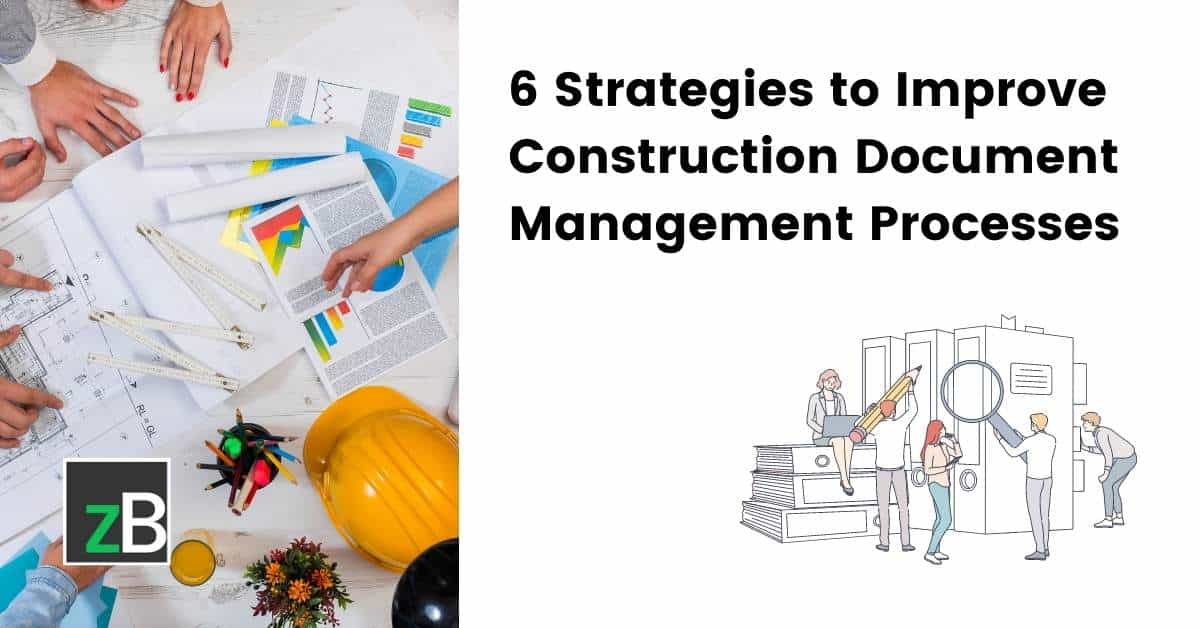Building Better Projects: The Function of Construction Document Management in Success
Building Better Projects: The Function of Construction Document Management in Success
Blog Article
Enhancing Operations Effectiveness: Architect's Specialist Methods for Building Document Monitoring
In the realm of building style and construction, the meticulous monitoring of files stands as a cornerstone for task success. Architects use different strategies to boost workflow performance and improve construction document administration procedures. From proficient organization strategies to the assimilation of joint platforms and the execution of safe and secure data management options, designers navigate a complicated landscape of tools and methods. Nonetheless, in the middle of this intricacy, a select few specialist strategies have become important in maximizing workflow effectiveness. These strategies not only make certain smooth project progression however likewise hold the vital to opening enhanced productivity and precision in the complex world of construction file administration.
Key Document Company Strategies
When taking care of building and construction records, among the essential techniques that engineers employ is establishing a efficient and organized company system. This system generally involves classifying documents based on their type, such as drawings, requirements, agreements, and permits. By creating clear and distinctive groups, designers can promptly find details details when required, saving time and lessening mistakes in the building and construction procedure.
Within each group, designers even more organize records by utilizing or creating subfolders numbering systems to denote modifications or versions (construction document management). This ordered structure makes sure that the most present and appropriate info is easily available while maintaining a record of changes made throughout the task timeline
Moreover, engineers typically utilize electronic file administration systems that provide attributes like keyword search features, version control, and accessibility constraints to boost company and cooperation amongst task stakeholders. These devices enhance the record access procedure, advertise real-time updates, and facilitate smooth interaction, inevitably adding to the general success of the building and construction project.
Collaborative System Integration
To maximize record administration effectiveness in building and construction tasks, designers effortlessly incorporate collective platforms to improve communication and improve control amongst task stakeholders. By leveraging collective systems such as job monitoring software application, cloud-based storage space systems, and interaction tools, engineers can produce a centralized hub for all project-related documents and communication channels. These platforms enable employee to access, evaluation, and collaborate on records in real-time, lowering hold-ups and the threat of errors related to standard paper administration techniques.
Collaborative platform assimilation additionally fosters openness and responsibility within the project team, as all stakeholders have presence into the most up to date project updates and alterations. By systematizing interaction and file sharing, engineers can make certain that all employee are working from the most updated information, minimizing the opportunities of misconceptions or conflicts arising because of obsolete papers.
Moreover, collective platforms allow smooth collaboration between designers, service providers, customers, and other job stakeholders, promoting a much more reliable and cohesive project process. By damaging down interaction barriers and assisting in information exchange, engineers can drive performance and advancement in building jobs, eventually causing successful job results.
Variation Control Ideal Practices
Executing reliable version control techniques is important for preserving file accuracy and uniformity in construction projects. By developing a clear system for taking care of revisions, task groups can make sure that everyone link is functioning from the most updated documentation, reducing the risk of errors and disparities throughout the building and construction phase.
One of the crucial ideal techniques for variation control is to appoint special identifiers to every record version. This can be achieved by utilizing a numbering system or day stamp that clearly suggests the order of revisions. By plainly identifying each model, staff member can easily track the progression of the paper and determine the most current version.

Automation Tools for Effectiveness

Paper control software application, like Procore or PlanGrid, centralizes job documents, making it quickly available to all stakeholders. These platforms enable real-time collaboration, variation control, and automated back-ups, protecting versus data loss. Furthermore, Structure Details Modeling (BIM) software application automates the generation of building illustrations and makes sure that modifications are integrated throughout all relevant files.
Integrating automation tools with cloud storage space services further boosts access and security. By automating the record management process, job groups can focus their effort and time on value-adding tasks, ultimately boosting efficiency and job outcomes.
Secure Information Management Solutions
Efficiently securing and handling job information is critical in the construction industry to guarantee confidentiality and integrity throughout the job lifecycle. Protected information management options play a critical function in securing delicate information from unauthorized accessibility or violations. Building firms can use encrypted cloud storage solutions to safely share and save project papers with licensed personnel. Applying accessibility controls, such as individual verification and approval settings, guarantees that just authorized individuals can watch or change delicate information.
Additionally, making use of electronic legal rights management (DRM) devices adds an added layer of protection by protecting against the unapproved distribution or duplication of job records. Routine data back-ups are important to alleviate the risk of information loss due to unpredicted scenarios like equipment failings or cyber-attacks. Collaborative systems with built-in protection functions enable smooth communication and documents sharing among task group members while keeping information stability.
Final Thought
To conclude, implementing vital paper company techniques, integrating collective platforms, practicing version control ideal techniques, utilizing automation tools, and taking on protected data management services are necessary approaches for go to my site enhancing process performance in construction document administration. These professional techniques can simplify processes, improve communication, make certain precision, and keep data security throughout the building and construction job lifecycle.
In the realm of architectural design and construction, the precise administration of documents stands as a cornerstone for project success. These techniques not just make sure smooth project progression yet also hold the vital to unlocking improved productivity and accuracy in the elaborate world of building file monitoring.
To optimize document management effectiveness in construction jobs, architects perfectly incorporate collaborative platforms to improve interaction and enhance coordination among job stakeholders. These systems permit group members to access, review, and work together on files in real-time, lowering hold-ups and the threat of errors associated with typical document management methods.
Using automation devices in construction document monitoring dramatically boosts efficiency and streamlines processes for project groups. construction document management.
Report this page